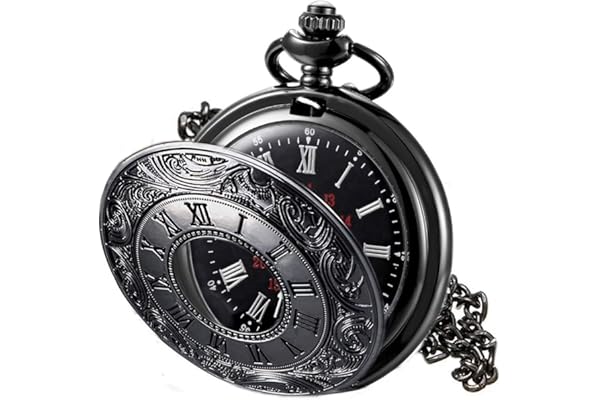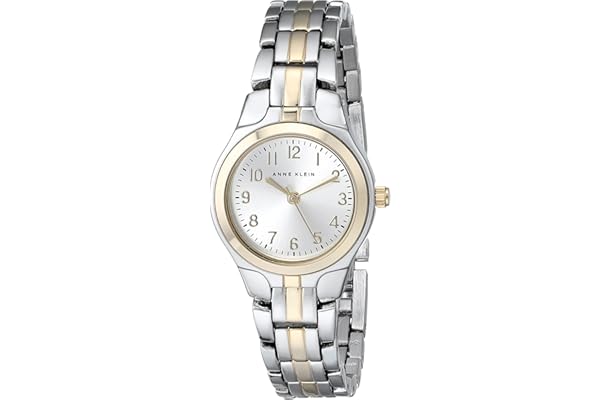Most Iconic Watches in History
Contents
The Evolution of Iconic Watches: A Historical Overview
Throughout history, watches have evolved from simple timekeeping devices to intricate symbols of style and sophistication. The journey of these horological masterpieces can be traced back to the 16th century when the first pocket watches emerged in Europe. These early watches were not only functional but also served as status symbols for the wealthy and influential. As technology advanced, the art of watchmaking flourished, leading to the creation of more precise and beautifully designed timepieces.
The transition from pocket watches to wristwatches marked a significant turning point in the history of horology. Initially, wristwatches were primarily worn by women, with men favoring the traditional pocket watch. However, during World War I, the practicality of wristwatches became evident, as soldiers required timepieces that allowed for hands-free operation. This shift in demand led to the mass production of wristwatches for both men and women, setting the stage for the iconic designs that would follow in the 20th century.
As the 20th century progressed, watchmakers began to experiment with innovative designs and materials, pushing the boundaries of what was possible in watchmaking. This era saw the birth of some of the most iconic watches in history, each with its own unique story and significance. From the first waterproof watches to those that accompanied explorers to the highest peaks and the deepest oceans, these timepieces have left an indelible mark on the world of horology.
One of the defining characteristics of iconic watches is their ability to capture the spirit of their time while transcending it. These watches are not only a reflection of technological advancements but also a testament to the craftsmanship and artistry of their makers. As we delve into the stories of these legendary timepieces, we gain a deeper appreciation for the role they have played in shaping our understanding of time and style.
The evolution of iconic watches is a story of innovation, artistry, and cultural significance. From their humble beginnings to their status as coveted collector’s items, these watches continue to captivate enthusiasts and collectors around the world. In the following sections, we will explore some of the most iconic watches in history, examining the factors that contributed to their legendary status and enduring appeal.
The Rolex Submariner: A Dive into Excellence
The Rolex Submariner is perhaps one of the most recognized and revered watches in the world. Introduced in 1953, the Submariner set the standard for dive watches and has since become synonymous with durability, precision, and timeless style. Its creation was driven by the growing interest in underwater exploration during the mid-20th century, a time when the mysteries of the ocean captivated the imagination of adventurers and scientists alike.
Rolex, known for its commitment to innovation and excellence, designed the Submariner to withstand the harsh conditions of deep-sea diving. The watch was equipped with a rotating bezel, allowing divers to track their time underwater accurately. Its robust Oyster case ensured water resistance, making it the perfect companion for both professional divers and enthusiasts. The Submariner’s design was not only functional but also elegant, featuring a clean and simple dial that made it easy to read in low-light conditions.
Over the years, the Rolex Submariner has undergone several updates and improvements, each iteration building upon the legacy of its predecessors. Despite these changes, the watch has retained its iconic design, characterized by its distinctive bezel and luminous markers. This timeless appeal has made the Submariner a favorite among collectors and celebrities, further cementing its status as a cultural icon.
The Submariner’s influence extends beyond the world of diving and watchmaking. It has appeared in numerous films, most notably worn by James Bond, the fictional British secret agent. This association with Bond has added an element of intrigue and sophistication to the Submariner, enhancing its allure and desirability. The watch has become a symbol of adventure and elegance, embodying the spirit of exploration that defines the Rolex brand.
In conclusion, the Rolex Submariner is more than just a timepiece; it is a testament to the ingenuity and vision of its creators. Its enduring popularity is a reflection of its exceptional craftsmanship and design, qualities that have made it a benchmark for dive watches worldwide. As we continue to explore the depths of the ocean, the Submariner remains a trusted companion, a reminder of the timeless pursuit of excellence and discovery.
The Omega Speedmaster: Chronograph of the Space Age
The Omega Speedmaster holds a unique place in the annals of watch history as the first watch worn on the moon. Its journey to the lunar surface is a tale of precision engineering, rigorous testing, and an unwavering commitment to excellence. Introduced in 1957, the Speedmaster was initially designed as a racing chronograph, intended for use by motorsport enthusiasts. However, its robust construction and exceptional accuracy soon caught the attention of NASA, leading to its selection for space missions.
The Speedmaster underwent a series of rigorous tests to ensure its suitability for the harsh conditions of space. These tests included exposure to extreme temperatures, vibrations, and vacuum conditions, all of which the Speedmaster passed with flying colors. In 1965, it was officially certified by NASA for all manned space missions, earning it the nickname “Moonwatch.”
The most significant moment in the Speedmaster’s history came on July 20, 1969, when astronaut Neil Armstrong stepped onto the lunar surface, marking humanity’s first steps on the moon. Although Armstrong left his Speedmaster aboard the lunar module as a backup, fellow astronaut Buzz Aldrin wore his on the moon’s surface, making the Speedmaster the first watch to be worn on the moon. This historic achievement has forever linked the Speedmaster with the spirit of exploration and innovation.
The Omega Speedmaster’s legacy extends beyond its association with space exploration. Its timeless design, characterized by its black dial and tachymetric scale, has made it a favorite among watch enthusiasts and collectors. The Speedmaster’s versatility and reliability have ensured its continued popularity, with new models and limited editions regularly introduced to commemorate significant milestones in its history.
In summary, the Omega Speedmaster is a symbol of human ingenuity and the pursuit of the unknown. Its journey from the racetrack to the moon is a testament to its exceptional craftsmanship and enduring appeal. As we look to the stars and dream of new frontiers, the Speedmaster serves as a reminder of the remarkable achievements of the past and the limitless possibilities of the future.
The Patek Philippe Nautilus: A Masterpiece of Luxury and Design
The Patek Philippe Nautilus is a watch that epitomizes luxury, elegance, and innovation. Introduced in 1976, the Nautilus was designed by the legendary watch designer Gérald Genta, who sought to create a timepiece that combined sporty aesthetics with the sophistication of a luxury watch. The result was a masterpiece that has become one of the most sought-after watches in the world.
The Nautilus’s design was inspired by the portholes of transatlantic liners, with its distinctive octagonal bezel and horizontal embossed dial. This unique combination of shapes and textures set the Nautilus apart from other luxury watches of the time, making it an instant classic. The watch’s stainless steel construction was also a departure from the traditional use of precious metals in luxury watches, further emphasizing its sporty and contemporary appeal.
One of the key factors contributing to the Nautilus’s iconic status is its versatility. The watch seamlessly transitions from casual to formal settings, making it a favorite among collectors and watch enthusiasts. Its elegant design and impeccable craftsmanship have earned it a place in the collections of some of the world’s most discerning watch connoisseurs.
Over the years, Patek Philippe has introduced various iterations of the Nautilus, each one building upon the legacy of the original design. These updates have included the incorporation of precious metals, additional complications, and limited editions that celebrate significant milestones in the watch’s history. Despite these changes, the Nautilus has retained its distinctive design and timeless appeal, ensuring its continued popularity in the world of luxury watches.
In conclusion, the Patek Philippe Nautilus is a testament to the artistry and innovation that define the world of luxury watchmaking. Its unique design and exceptional craftsmanship have made it a symbol of elegance and sophistication, qualities that have ensured its place as one of the most iconic watches in history. As we continue to appreciate the beauty and intricacy of fine timepieces, the Nautilus remains a shining example of what can be achieved when creativity and craftsmanship come together.
The Audemars Piguet Royal Oak: Revolutionizing the Luxury Watch Industry
The Audemars Piguet Royal Oak is a watch that revolutionized the luxury watch industry with its bold design and innovative use of materials. Introduced in 1972, the Royal Oak was the brainchild of Gérald Genta, the same visionary designer behind the Patek Philippe Nautilus. The Royal Oak challenged conventional notions of luxury watch design, paving the way for a new era of horological innovation.
The Royal Oak’s most distinctive feature is its octagonal bezel, secured by visible screws, which was inspired by a traditional diving helmet. This unconventional design was a departure from the classic round cases typically associated with luxury watches, making the Royal Oak an instant standout. The watch’s integrated bracelet and use of stainless steel further emphasized its modern and sporty appeal, setting a new standard for luxury sports watches.
At the time of its release, the Royal Oak was considered a bold and daring departure from traditional luxury watch design. However, its unique aesthetic and exceptional craftsmanship quickly won over watch enthusiasts and collectors, earning it a place among the most iconic watches in history. The Royal Oak’s success paved the way for other luxury watch brands to explore new design possibilities and experiment with unconventional materials.
In addition to its groundbreaking design, the Royal Oak is renowned for its precision and reliability. The watch is powered by an automatic movement that exemplifies Audemars Piguet’s commitment to excellence and innovation. This combination of cutting-edge design and exceptional performance has made the Royal Oak a favorite among collectors and a symbol of modern luxury.
In summary, the Audemars Piguet Royal Oak is a watch that redefined the boundaries of luxury watch design. Its bold aesthetic and innovative use of materials have made it a trailblazer in the world of horology, inspiring countless other designs and setting new standards for what a luxury watch can be. As we continue to explore the possibilities of modern watchmaking, the Royal Oak remains a testament to the power of creativity and the enduring appeal of bold design.






